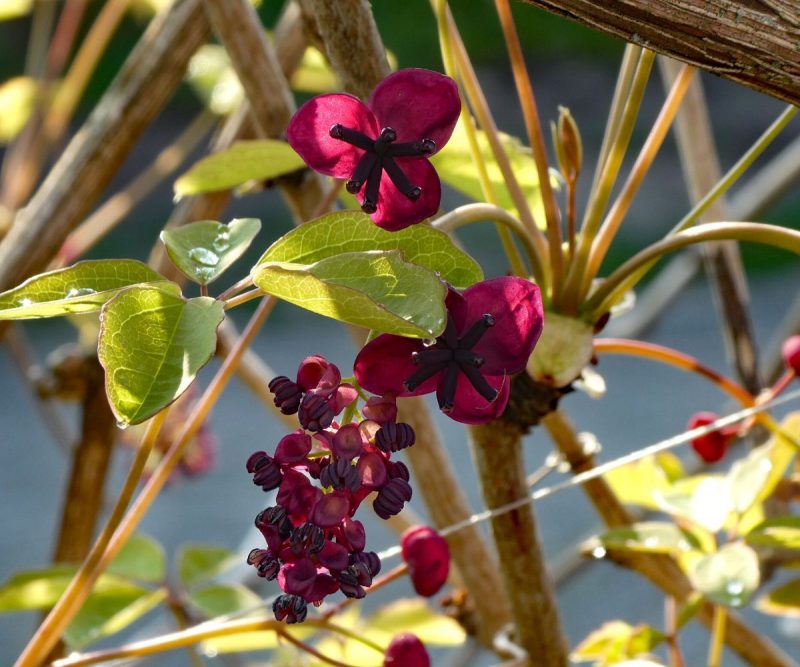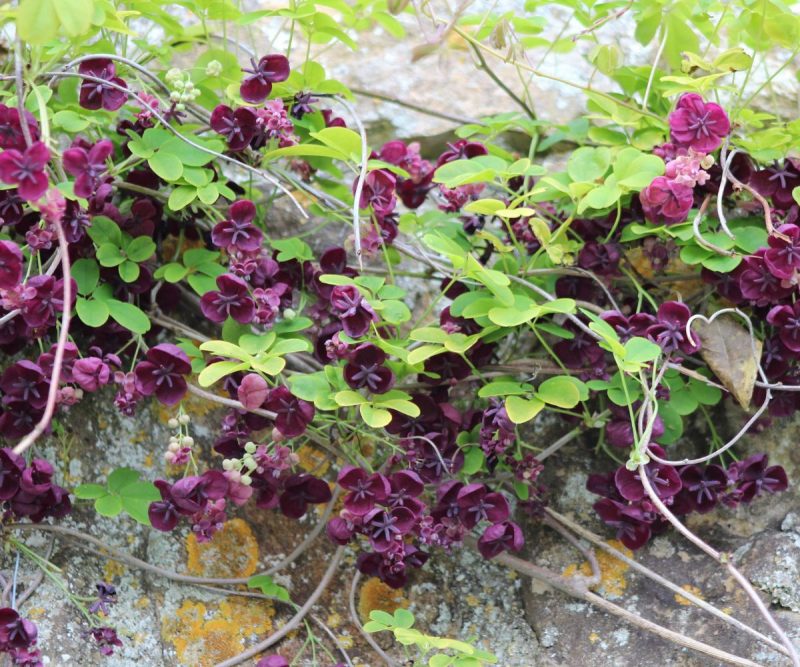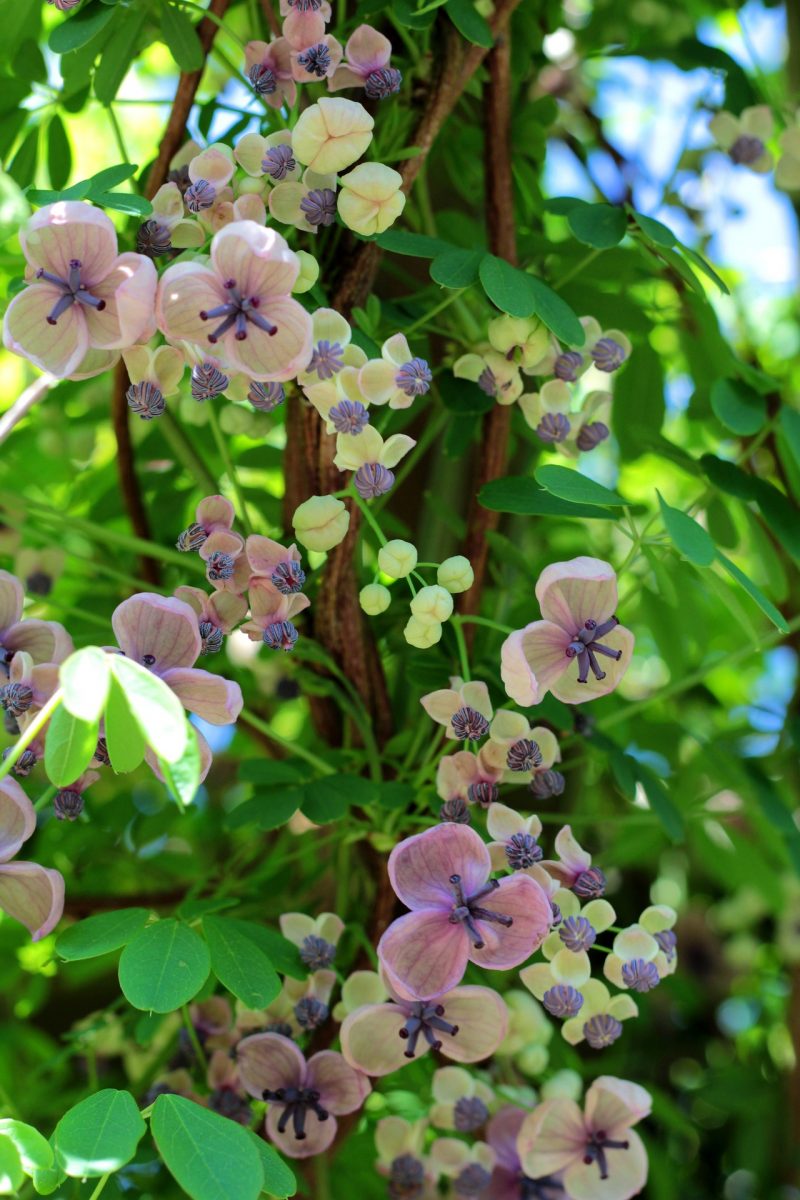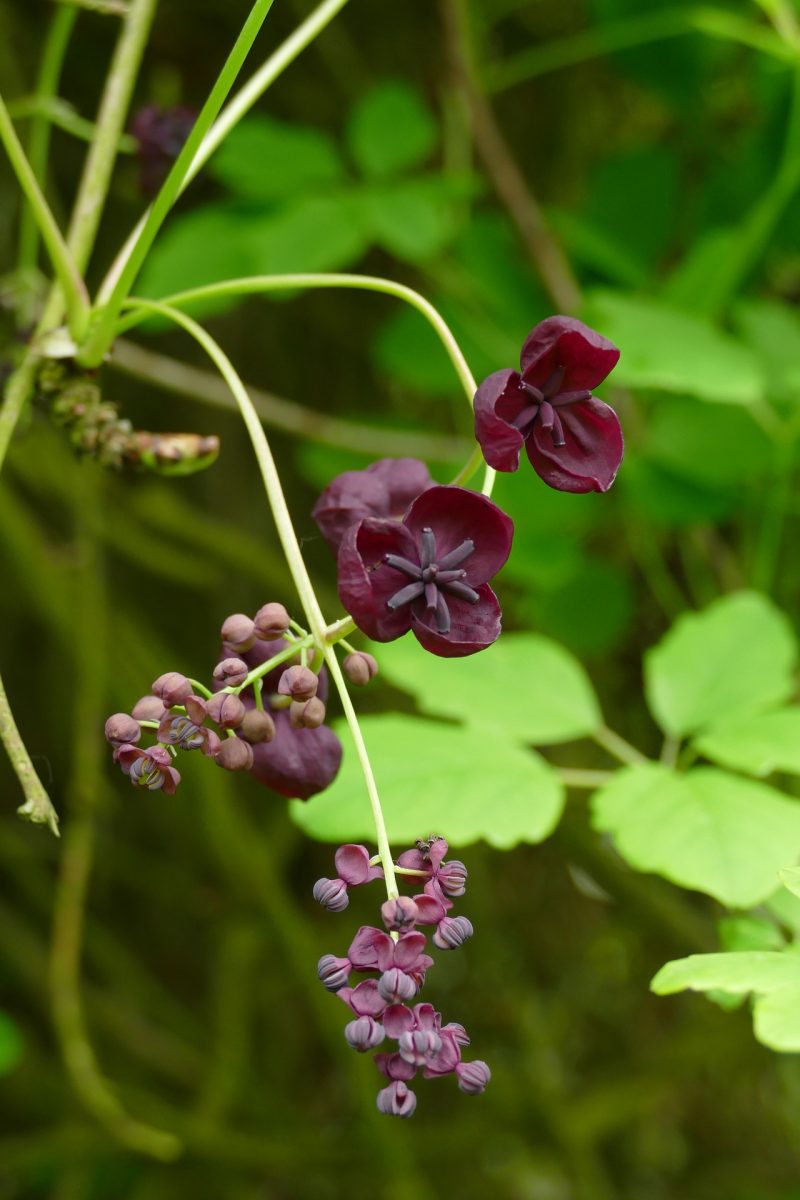Chocolate vine, planting guide and care work

Akebia quinata, also popularly called chocolate vine, is a perennial plant, originally from Southeast Asia, particularly from Japan, Korea and China. The name chocolate vine is given by the dark purple flowers, as well as by their delicate chocolate scent. The flowers begin to appear at the beginning of spring.
The leaves are palmate, oval, dark green in color, and the flowers made up of 3 petals are arranged in bunches. Each flower cluster bears both female and male flowers. The flowers are followed, in mid-summer, by edible fruits. In European environmental conditions, it rarely bears fruit, being cultivated more as an ornamental plant.
Since it is a vine, Akebia quinata can be used for ground cover or as a climbing plant on various supports or structures.
Chocolate vine – varieties and cultivars
- Akebia quinata ‘Purple Bouquet’: it has a compact growth, reaching only half the height of the other varieties. The flowers are dark purple in color, with a slight chocolate scent;
- Akebia quinata ‘Alba’: it has greenish-white stems, which bear small white flowers;
- Akebia quinata ‘Rosea’: with pink flowers, with a slightly pale tint, which stand out against the background of the dark green foliage;
- Akebia quinata ‘Variegata’: it stands out for its variegated foliage, with white and green spots. The flowers are pink-purple.



Environmental conditions
Light. The plant grows and blooms in light, needing at least 6 hours of light per day. However, this species can also grow in shade or partial shade.
Temperature. It prefers moderate temperatures, between 15-30 ℃. In regions with harsh winters, the plant may lose its leaves during the winter, but they will form again in the spring.
Soil. Chocolate vine can grow in almost any type of soil, but it prefers clayey or sandy soils that allow a good water drainage.
Chocolate vine – care
Watering. The young plants are watered regularly, so that the soil remains slightly damp. Mature plants are watered depending on rainfall. It is a species that tolerates drought only temporarily.
Fertilizing. If the soil is poor in nutrients, it is recommended to fertilize the plants using fertilizers specially formulated for flowering plants.
Recommended products
-
You can find products on a different store
Change Store -
You can find products on a different store
Change Store -
You can find products on a different store
Change Store -
You can find products on a different store
Change Store -
You can find products on a different store
Change Store -
You can find products on a different store
Change Store -
You can find products on a different store
Change Store -
You can find products on a different store
Change Store -
You can find products on a different store
Change Store -
You can find products on a different store
Change Store -
You can find products on a different store
Change Store -
You can find products on a different store
Change Store -
You can find products on a different store
Change Store -
You can find products on a different store
Change Store -
You can find products on a different store
Change Store -
You can find products on a different store
Change Store -
You can find products on a different store
Change Store -
You can find products on a different store
Change Store -
You can find products on a different store
Change Store -
You can find products on a different store
Change Store -
You can find products on a different store
Change Store -
You can find products on a different store
Change Store -
You can find products on a different store
Change Store -
You can find products on a different store
Change Store
Propagation. It is propagated by seeds or cuttings (the most common method).
Pruning. Since it has a fast and vigorous growth, the plant requires regular pruning to keep it under control. This can be carried out at the end of spring, after flowering.
Recommended products
-
You can find products on a different store
Change Store -
You can find products on a different store
Change Store -
You can find products on a different store
Change Store -
You can find products on a different store
Change Store -
You can find products on a different store
Change Store -
You can find products on a different store
Change Store -
You can find products on a different store
Change Store -
You can find products on a different store
Change Store -
You can find products on a different store
Change Store -
You can find products on a different store
Change Store -
You can find products on a different store
Change Store -
You can find products on a different store
Change Store -
You can find products on a different store
Change Store -
You can find products on a different store
Change Store -
You can find products on a different store
Change Store -
You can find products on a different store
Change Store -
You can find products on a different store
Change Store -
You can find products on a different store
Change Store -
You can find products on a different store
Change Store -
You can find products on a different store
Change Store -
You can find products on a different store
Change Store -
You can find products on a different store
Change Store -
You can find products on a different store
Change Store -
You can find products on a different store
Change Store
Diseases and pests
Akebia quinata is a plant resistant to diseases and pests, which makes it easy to maintain.
Additionally:
- In some countries, this plant is considered an invasive species;
- The lack of flowers can be determined by the absence of phosphorus in the soil;
- Various symptoms on the leaves are often caused by excessive watering and by the lack of water drainage.















































































































































































































































































































































































































































